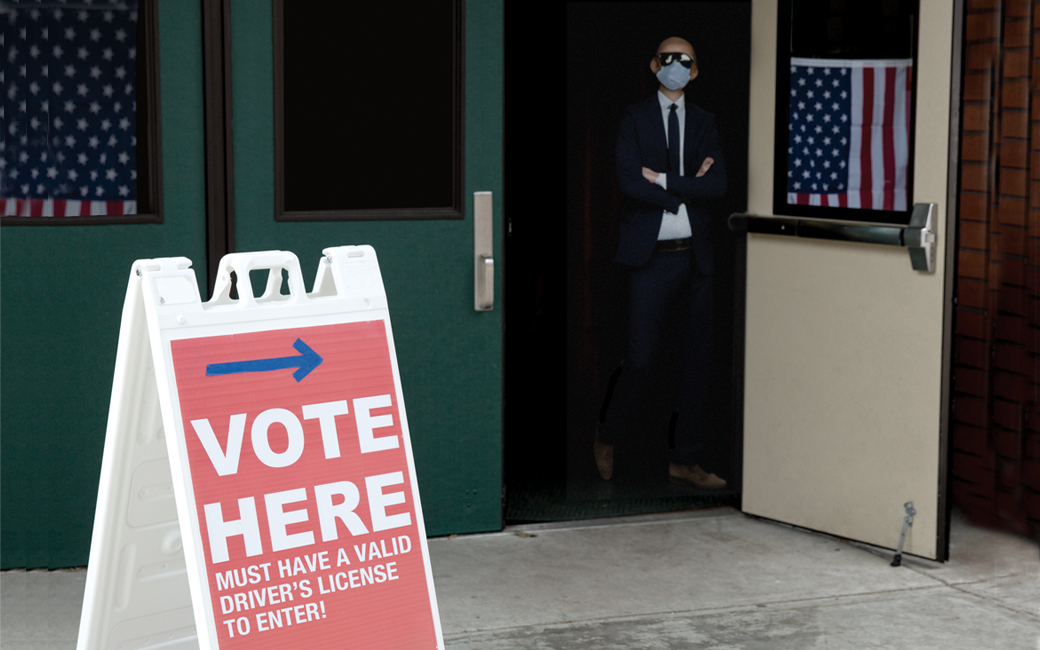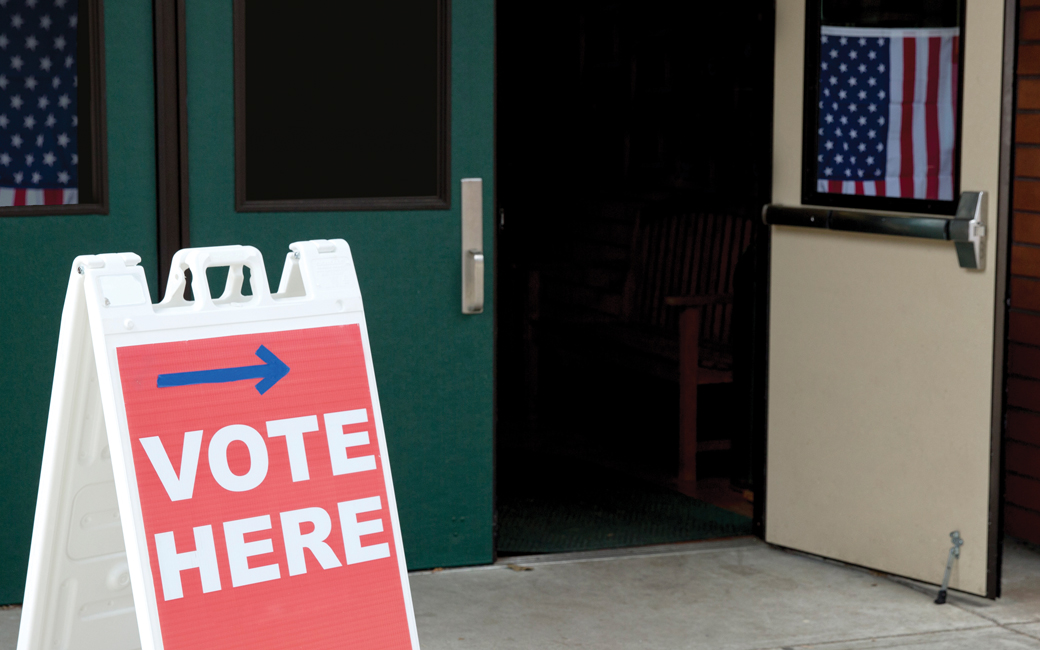
Education 4.0
TU faculty and staff share the state of generative artificial intelligence on campus and how that may evolve.
Words by Megan Bradshaw
Illustrations by David Calkins ’93, ’22
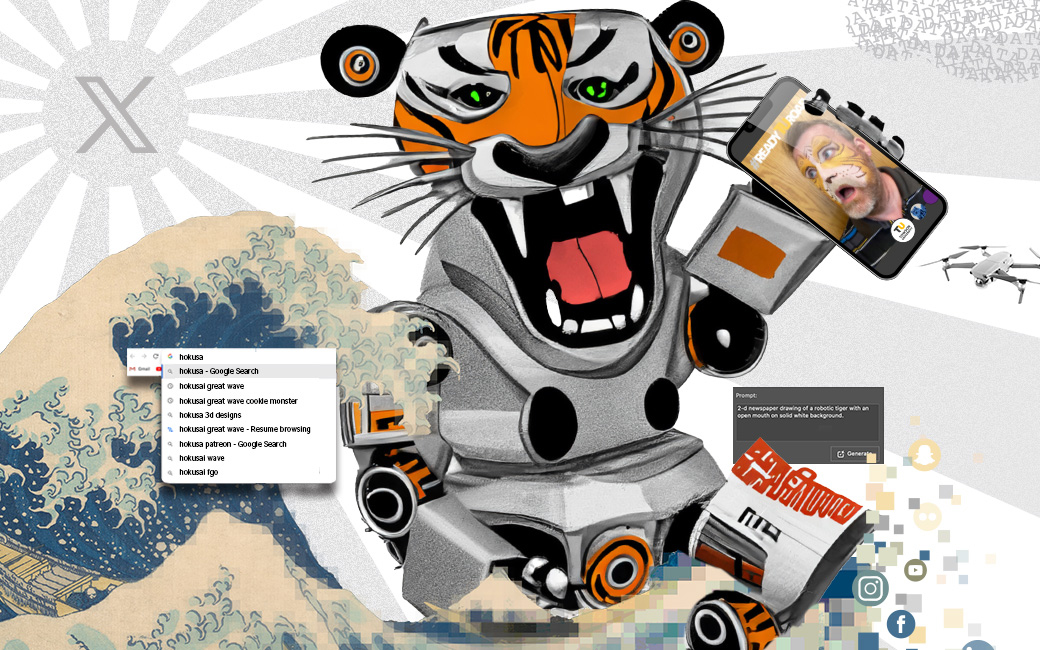
The interviews for this article were transcribed by artificial intelligence (AI). Email autocomplete, customer service chatbots, talk-to-text services, virtual assistants like Siri and Alexa, autonomous vehicles, entertainment streaming recommendations, iPhone Face ID, banking fraud detection, personalized ads and navigation apps are all powered by AI.
It could be argued artificial intelligence has already taken over.
Generative AI—systems capable of creating a variety of media in response to queries—has stepped center stage in the last six months. It is extending humans’ ability to solve complex problems, automate tasks, streamline workflows and even generate art. In higher education, AI tools are already used to crunch admissions numbers, resolve accessibility issues and sift through large amounts of research data to identify patterns and build models.
Leaders in every industry are sharply divided about the strength of its potential and pitfalls. At TU, faculty and staff recognize both and have already begun to prepare for the next evolution of education by investigating and including AI applications in their classwork, assignments and professional development.
That preparation can hardly happen fast enough.
How to train your robot
The origins of deep neural network and artificial intelligence date back to the 1950s according to Yifan Guo, an assistant professor in computer information and sciences in TU’s Fisher College of Science and Mathematics.
“But later their progress is significantly impeded by the limitations in hardware capabilities, the scarcity of labeled data sources and the maturation rate of AI algorithms,” he says. “There wasn’t a series of AI frameworks that could handle all those problems until 2012 or 2013. Since then, deep learning has grown exponentially.
The first chatbot was developed in the mid-1960s at MIT but professional skepticism stalled progress until the 1980s. It wasn’t until the mid-2010s that generative adversarial networks, a type of neural network that powers generative AI’s production abilities, were developed. From there, the field exploded.
These tools used to require specialized technical skill to operate. Now, most iterations give everyday users a box to type a question or prompt and receive a response formulated by a large language model—an algorithm that reviews an enormous amount of human-generated data to predict and produce text. ChatGPT-4, for example, was fed around 570 GB of data, which equals about 300 billion words from all over the internet.
When asked to create a three-sentence introductory paragraph for this story that included one positive and one negative aspect of AI, ChatGPT produced:
“Generative Artificial Intelligence, or GAI, has emerged as a revolutionary technology with both transformative potential and inherent challenges. On the positive side, GAI offers unparalleled creativity and innovation, empowering machines to produce art, music, and literature that rival human creations. However, this remarkable capability also raises concerns about the ethical implications of AI-generated content, as it becomes increasingly difficult to distinguish between genuine human expression and machine-generated fabrications, potentially leading to issues of misinformation and trustworthiness.”
While somewhat stilted and totally lacking in emotional depth, the above paragraph is serviceable. So where does that leave colleges and universities, who are in the business of educating and producing scientists, philosophers and, yes, even writers?
It’s already among us
Anytime you say “Hey Alexa…” or “OK Google…” you’re using generative AI. Students at Georgia Tech have been saying “Hey Jill…” since fall 2015.
The 300 students in a master’s-level AI class posted around 10,000 messages a semester on the course’s online message board—too many even for the eight human teaching assistants assigned to the course. The professor found many of the questions were repetitive, so he and a team built an AI teaching assistant, populating it with tens of thousands of questions and answers from previous semesters and calling it Jill Watson. It had a 97% accuracy rate, and most students didn’t realize they were talking to artificial intelligence, despite the allusion to IBM’s supercomputer Watson.
AI’s use in higher education is set to grow by 40% between 2021 and 2027, and the education market for it is anticipated to reach $80 billion worldwide by 2030.
Mairin Barney, assistant director for faculty outreach at TU’s Writing Center, conducted a faculty survey last spring to take members’ pulses on AI. Results from a small sample size were mixed, but a common fear was students committing academic integrity violations by using AI.
Did You KNow
AI’s use in higher education is set to grow by 40% between 2021 and 2027, and the education market for it is anticipated to reach $80 billion worldwide by 2030.
Part of what prompted the survey was faculty members contacting the Writing Center during fall 2022 with questions: What should I do differently in my spring classes to account for this? How worried do I need to be?
“Our general line of advice is, ‘Don’t freak out. The best way to make sure your students are doing their own work is to support them in the writing process,’” Barney says. “[The choice whether to use AI in the classroom] is a very personal decision every professor has to make for themselves, and the Writing Center can support either of their choices.”
Sam Collins, Jennifer Ballengee and Kelly Elkins are Faculty Academic Center of Excellence at Towson (FACET) fellows who’ve taken on the task of informing colleagues of developments and best practices for AI in higher ed. The trio are cautious about the idea of a blanket campus AI policy.
“There’s several reasons for that,” Collins says. “One is certainly academic freedom. We’re all doing different things in different ways, and a blanket approach is not really going to work for everyone. But No. 2, whatever policy the university makes in a field undergoing really strong growth is going to have to be flexible. Strong policies that prohibit the use of AI may not have the intended effect. The more interesting question for us is how are we going to live with it?”
Some TU faculty members are already grappling with that.
“I teach business communication: how to appeal to an audience, how to write to an audience, how to think about the questions they’re going to answer for an audience. I’ll teach that forever,” says Chris Thacker, a lecturer in the business excellence program in the College of Business and Economics.
But he does see generative AI as a potentially valuable reflection tool for students. He started using it early last spring and has plans to incorporate it this fall.
"One assignment requires students to submit their entry-level resumes to the AI. The objective is to help them envision their career paths five and then 10 years down the line," Thacker explains. "We analyze the job opportunities the AI recommends, which are based on job descriptions in the relevant field. This exercise encourages students to broaden their perspectives on the field.
"In addition to the AI-based career exploration, we also conduct an analytical report to enhance students’ skills in information evaluation. This semester, the focus is on real estate. The assignment challenges students to select the ideal home for a family based on specific criteria and then persuade the family to make the purchase," he says. "While students have always enjoyed these types of assignments, the incorporation of AI adds a new layer. It provides a simulated audience to whom they can pose questions, allowing them to reflect on both their work and the AI’s responses to improve the overall quality of their work."
Nhung Hendy is another CBE professor who has accepted the growth of AI in higher education.
“In all three HR classes I teach, I require reports as the main project,” the management professor says. “In one, students provide written and oral debates. In the other two, they also run a simulation in which they play the role of an HR director. They make decisions concerning hiring, performance, benefits and training. I tell them, ‘You can come up with a strategy for employee retention based on the textbook and our class discussion, reading the literature or play with ChatGPT and see which one is more efficient and effective.’”
Liyan Song, professor and director of the educational technology master’s program in TU’s College of Education, takes a similar approach.
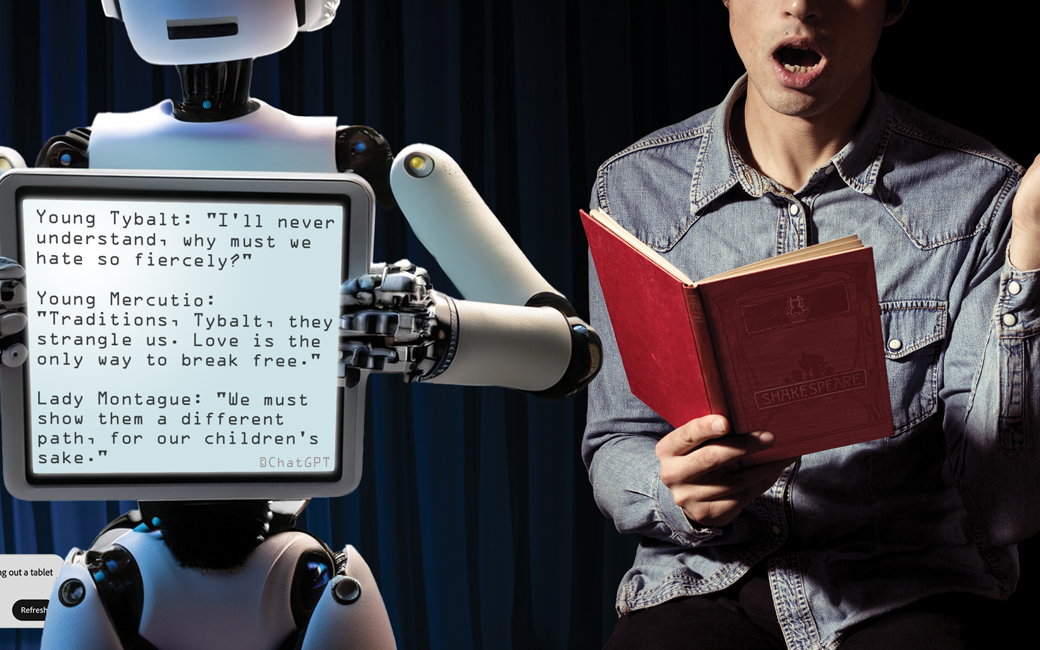
“One thing I learned working in the field of technology is you can’t tell people whether they should or should not use technology,” she says. “You have to help them realize what technology can or cannot do, so they can make their own decisions.”
“I asked my students to experiment with ChatGPT. They were to ask about one topic they’re familiar with and one topic they weren’t. We discussed our findings in class. I felt like it was a meaningful way to help them understand what it can do and the limitations. I haven’t really used generative AI in a more systematic way in my classes yet. But it’s something I plan to do.”
Song’s students are teachers, so she is keenly aware of the challenges and opportunities inherent in helping them integrate AI into their classrooms when it evolves so frequently.
“Keeping up with the current trends has always been a challenge,” she says. “Generative AI is just one of those trends. We need to understand the issues related to it. At the same time, we need to educate our students about it. When they understand the issues, they can bring it to their own classrooms to teach to their students.”
“I see this more as an opportunity than a threat,” Song continues. “It comes with challenges and risks. We need to learn to make it work for us. That’s the attitude I encourage.”
Joyce Garczynski works with many students as assistant university librarian for communication and digital scholarship at Cook Library.
“What I’ve seen with the mass comm faculty I’ve worked with is a lot of, ‘Let’s evaluate the output and see if we can detect some of the biases that go with it. This isn’t going anywhere, so how can we teach you to be responsible users of it?’” she says. “There’s a lot of fear with this technology that there’s going to be academic integrity violations. And when AI doesn’t know, it makes stuff up. I don’t think we’re doing our students a service if we say, ‘This technology is bad, let’s ignore it.’ We need to train our students to be responsible users of this technology.”
Great power brings great responsibility
As AI speeds toward its future, questions are being asked about who owns the information the large language models consume.
Mark Burchick has a unique perspective to share as an electronic media and film staff member and an MFA student in the studio art program in the College of Fine Arts and Communication.
“I’m primarily a filmmaker,” Burchick says. “Once AI image-making came into the conversation, I became enamored with, ‘What does this allow me to do in my practice?’”
After some initial excitement, learning how the technologies were created gave him pause.
“How many copyrighted materials have been swept into large language models?” Burchick says. “When we create an AI image, we are seeing as the internet sees. The images created show the biases of the internet and the data set. If you are not concerned about these things and you’re using these technologies, you’re doing it wrong. These are important tools, but they need to be used with those concerns in place because real lives are being affected by using the technology.”
“ If you are not concerned about [internet bias] and you're using these technologies, you're doing it wrong. ”
Biased information included in data sets sometimes means asking the same question two different ways produces two different answers.
“If you ask for a paragraph about the Baltimore riots, you will get a very different paragraph than if you ask about the Baltimore uprising,” Garczynski says. “The technology’s only as good as the data it’s fed. What we see is we live in a biased information ecosystem. Certain voices have more privilege, and it’s easier for them to create lots of information. Other voices don’t have that ability to widely circulate their perspective. And what ends up happening is the base these technologies learn from ends up being biased from the very beginning, so their output ends up biased as well.”
“With the information I can access, I can run things 900 to 1,200 times better than any human.” Actor David Warner uttered that line as Master Control Program in the 1982 movie “TRON.”
It seems the future is now.
A recent study using U.S. Census data found 60% of workers today are employed in occupations that did not exist in 1940, implying that more than 85% of employment growth and creation over the last 80 years has been driven by technology. The labor market seems poised for another shakeup. A 2022 Future of Jobs Report from the World Economic Forum predicted 85 million jobs would be lost by 2025 but 97 million would be created—a net increase of 12 million.
People tend to focus more on the former than the latter. That’s led to a great deal of fear and uncertainty in the workplace.
“Workers are afraid computers can do their jobs,” says Hendy, the CBE professor. “People like routine, but we have to embrace change, especially to make our jobs easier. We have to recognize the fact AI makes better decisions because of the level of data it’s analyzed. How can a human compete with a thousand data points as the basis for a decision? And I’m being very conservative. There are millions of data points that may be available.”
Hendy’s advice is simple but not easy: Be brave and try new things, be innovative and be humble enough to learn the new technology.
Sasha Pustovit, assistant professor of management in CBE, takes it a step further, reminding students workplaces will still be populated by people.
“Generative AI works by learning from the past, but we are always going to have new problems, and that’s where you need people,” she says. “All the skills humans have but computers and AI don’t are going to be at a premium. In addition to critical thinking, it will be emotional intelligence. Empathy is cited by some as the top skill managers should have. That’s something we should really develop and make our strength.”
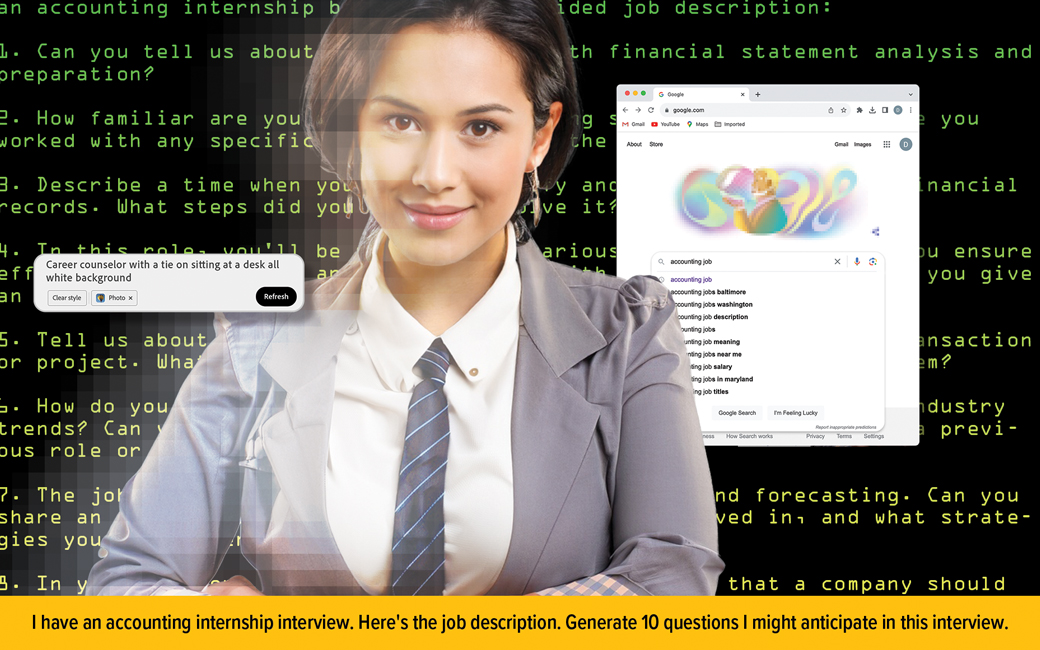
TU’s Career Center has been preparing students for life after graduation for 60 years. Even with the advent of generative AI, that isn’t going to change.
“Our career coaches give students a personalized experience,” says Glenda Henkel, associate director of career education. “So we urge students to make appointments and really build relationships with them.”
Generative AI can help students prepare for their career coach appointments. Prompts can help them narrow their discussion topics ahead of time by finding possible opportunities to review: Based on my resume, generate a list of 10 nonprofit agencies in the Towson area where I might be qualified to do a spring internship in marketing or public relations.
AI could supplement career coach advice if students do their career research at times, perhaps 3 a.m., when career coaches aren’t available. Henkel says generative AI could also aid interview prep outside of coaches’ availability. “Students could write a prompt such as, ‘I have an accounting internship interview. Here’s the job description. Generate 10 questions I might anticipate in this interview,’” she says. “It can also help them with questions that can be hard to research beforehand, such as determining a company’s culture or diversity.”
The Career Center has several platforms students can use to prepare for internships and their professional lives. One is called Forage. It hosts work simulations from cutting-edge global Fortune 500 companies. Students can participate in the simulations, which can take between eight and 20 hours to complete, and if they desire, they can send their results to personnel at the company where they “worked” for feedback.
She notes students and recent graduates have been encountering AI in the hiring process for at least the last year or so, particularly during resume screening.
“I’ve talked to a couple of students who’ve encountered it at the first level of interviewing. It was an AI interview, so they did not interview with a real person,” Henkel says. “They were given questions and they had to record their answers, which were reviewed and scored before they were ever put in touch with any human.”
Henkel and her colleagues have been pursuing professional development to help students stay ahead of the hiring trends, and they are continuing to brainstorm ways to modify their services as it is needed. She advises students to keep on an even keel.
“No matter what anybody feels about technology, be open minded about embracing it and understanding how it can be used ethically and effectively,” she says. “It’s a matter of your mindset. AI is in the door whether you want it to be or not, but looking at it as a helper and not an intruder is important.”
A brave new world
How does higher education prepare graduates for what comes next?
TU’s emphasis on small classes and faculty mentorship has the university well positioned for the future.
“TU needs to continue to do what it does really well, which is have opportunities for students to interact really closely with faculty in small classroom settings and through faculty members’ unique approach toward assessing student learning,” says Elkins, FACET faculty fellow and chemistry professor.
Thacker agrees.
“CBE is emphasizing critical thinking, creative problem-solving and programming languages like Python,” he says. “Students need to excel in these areas, be adaptive and capable of processing large amounts of information to make informed and timely decisions.”
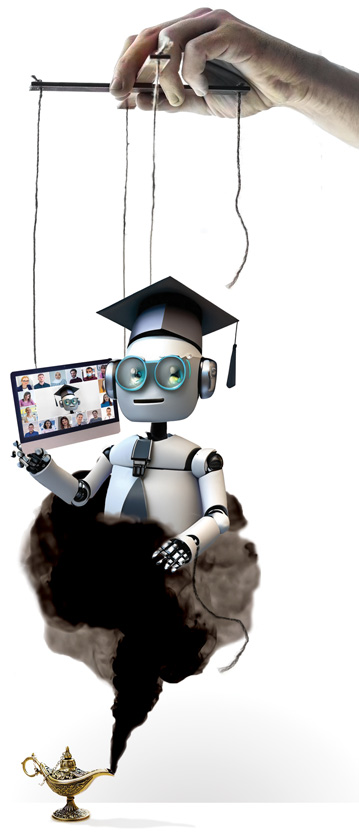
Despite AI’s inherent risks and rewards and its murky future in higher education, TU faculty and staff are readying themselves to prepare TU graduates for the future.
“Technologies that give people skill sets they didn’t have before are going to invite a lot more people into the conversation,” Burchick says. “People who can articulate their visions in ways they previously couldn’t are going to change our creative landscape in exciting ways.”
Whether we develop skill sets through AI or the old-fashioned way, people will still be at the forefront of the workplace.
“We still have control,” Pustovit reiterates. “There’s a really great opportunity for AI to make our work easier so we can focus more on the interpersonal aspects. This can really benefit workers, but we need to stay proactive and develop the skill sets we need to take advantage of this AI revolution.”
Some faculty see potential for change in instruction and assessment methods.
“Maybe it will get people to rethink their teaching and encourage some more creative and inclusive modes of assessment, like multimedia assessment, podcast, video or a mind map,” says Ballengee, FACET fellow and English professor. “There are so many ways that can incorporate what students are hoping to do in their careers. We can think differently about what’s relevant and valuable and why we’re teaching what we are.”
Regardless, the consensus seems to be: It’s here. It’s staying. Let’s find ways to work with it.
"The genie is out of the bottle with technology, so it’s essential to equip students with the skills to adapt," Thacker says. "Innovation has always faced criticism; for example, the invention of the eraser was once controversial among educators because of its impact on the act of writing and invention. Yet we adapted. The same will happen with AI, a powerful tool that presents challenges similar to those we’ve overcome in the past."
